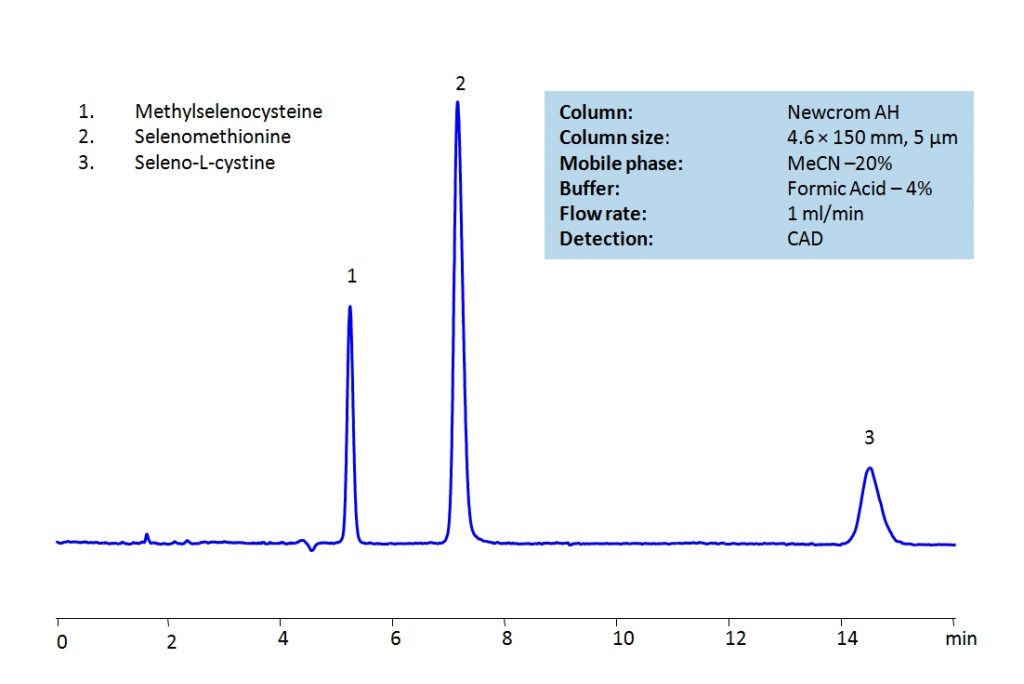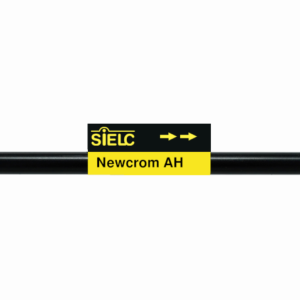HPLC Method for Seleno-L-cystine, Selenomethionine, Methylselenocysteine on Newcrom AH by SIELC Technologies
High Performance Liquid Chromatography (HPLC) Method for Analysis of Seleno-L-cystine, Selenomethionine, Methylselenocysteine.
Methylselenocysteine is used in chemotherapy to induce apoptosis (cell death) of the cancerous cells. Methylselenocysteine is an amino acid with antioxidant properties and a main source of selenium in several foods. Selenocysteine is an analog of cysteine with the selenium replacing sulfur. It has been used as a radioactive tracer. All three analytes are zwitterions and have similar structures which can present difficulties in reversed-phase separation in HPLC. By using a mixed mode Newcrom AH column which has ion-exchange properties in addition to hydrophobic properties allows the separation of the seleno amino acids with an MS-compatible mobile phase of water and acetonitrile (ACN) with formic acid buffer.
| Column | Newcrom AH, 4.6 x 150 mm, 5 µm, 100 A, dual ended |
| Mobile Phase | MeCN – 20% |
| Buffer | Formic Acid – 4% |
| Flow Rate | 1.0 ml/min |
| Detection | CAD |
| Class of Compounds |
Drug, Acid, Hydrophilic, Ionizable, Vitamin, Supplements, Amino acid |
| Analyzing Compounds | Seleno-L-cystine, Selenomethionine, Methylselenocysteine |
Application Column
Newcrom AH
Column Diameter: 4.6 mm
Column Length: 150 mm
Particle Size: 5 µm
Pore Size: 100 A
Column options: dual ended
Seleno-L-cystine
Selenomethionine






